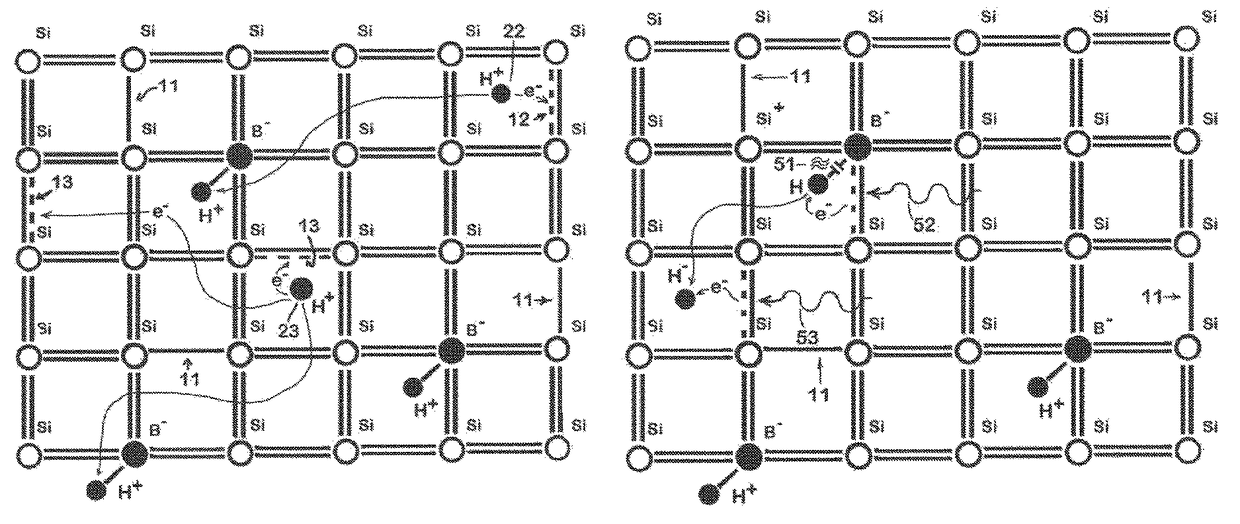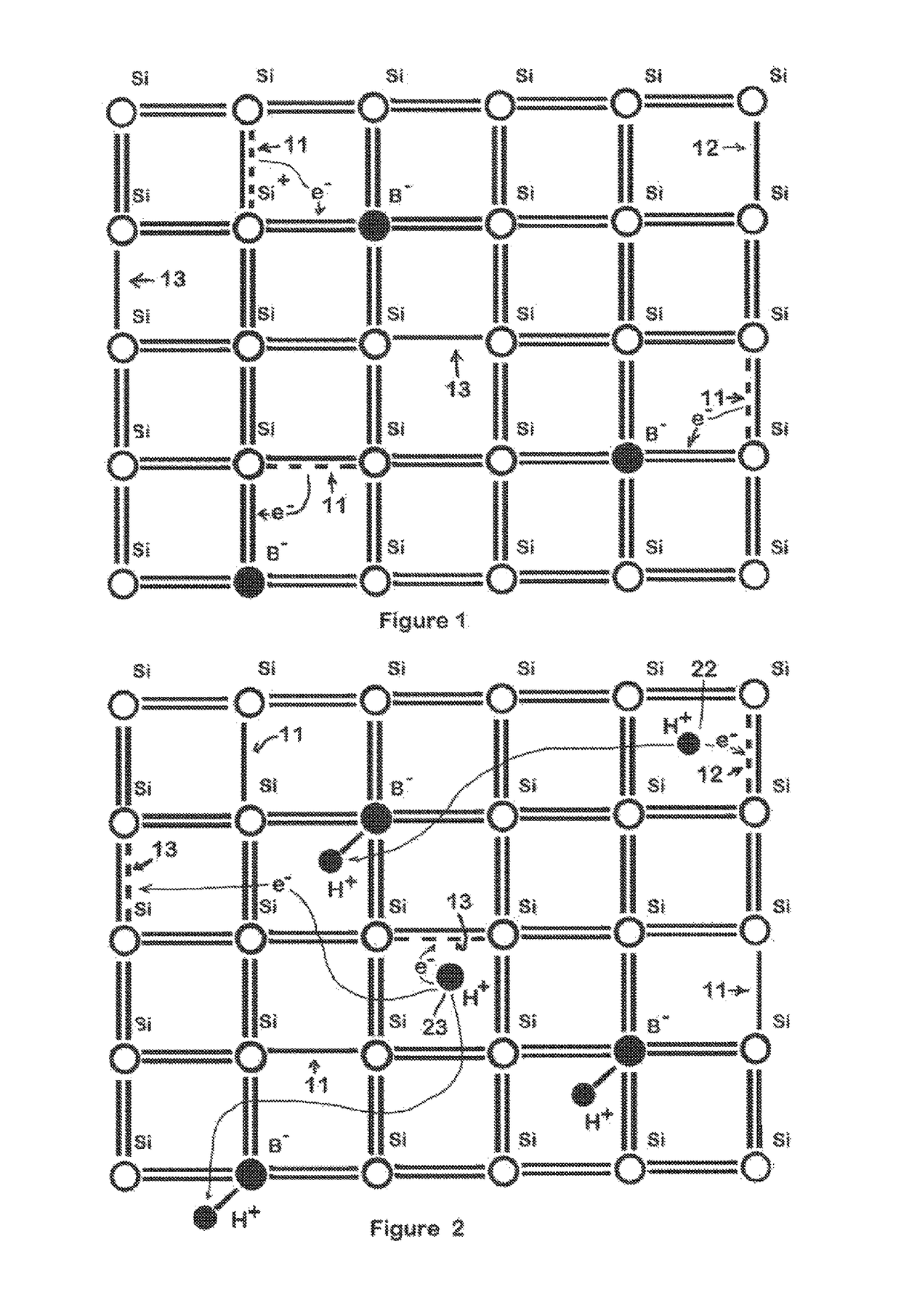High concentration doping in silicon
a technology of silicon and doping concentration, applied in the field of high concentration doping in silicon, can solve the problems of reducing the efficiencies of solar cells made from such materials, reducing the minority carrier lifetime of silicon, and unsatisfactory designs of commercially manufactured solar cell structures, so as to reduce the likelihood of reactivation of the dopant atom
- Summary
- Abstract
- Description
- Claims
- Application Information
AI Technical Summary
Benefits of technology
Problems solved by technology
Method used
Image
Examples
examples
1. Deliberate Addition of Extra Boron (B) and Subsequent Deactivation by Hydrogen in Localised Areas to Form a Selective Emitter
[0074]Boron (or other dopants) can be intentionally added to the silicon. By manipulating the charge state of hydrogen in some or all areas of the device and providing sufficient thermal energy (typically 150°-500° C.) to increase the amount and mobility of the hydrogen, the boron can be de-activated (or re-activated as desired)—by enabling boron & hydrogen to bond together (or break and separate if boron reactivation is desired). This has many important implementations such as profiling resistivity in an emitter to form a selective Emitter, which can be done in a number of ways including but not limited to:
(i) Example 1—Local Deactivation
1) Referring to FIG. 7, an n-type wafer 70 is textured 71;
2) A boron diffusion of the top surface to notionally achieve a p+ region with a sheet resistance of 45-55Ω / □ (but which could be anywhere within a range of 1-80Ω / □...
example 2
(ii) Local Deactivation
1) Referring to FIG. 16, a p-type wafer 160 is textured 161;
2) A phosphorus diffusion of the top surface to notionally achieve an n+ region with a sheet resistance of 45-55Ω / □ (but which could be anywhere within a range of 1-80Ω / □) creates an emitter layer 172 seen in FIG. 17;
3) A boron diffusion 173 may also be added to the rear surface to again notionally achieve an p− region with a sheet, resistance of 45-55Ω / □ (but which could be anywhere within a range of 1-80Ω / □) as also seen in FIG. 17;
[0077]4) A front surface dielectric layer 183 and a rear surface dielectric layer 184 are then deposited as seen in FIG. 18. The dielectric layers 183&184 act as hydrogen sources and may be selected from hydrogen containing dielectric materials such as silicon nitride, silicon oxynitride, aluminium oxides etc.;
5) The front surface dielectric layer 183 is patterned as seen in FIG. 19, to create openings 195 for emitter metallisation. This can be done by a laser 191, by scr...
example 3
(iii) Deactivation and Local Reactivation
[0078]1) Referring to FIG. 25, hydrogenation is performed on a n-type wafer 70 similar to that see in FIG. 9 to produce a lightly doped emitter layer 252 prior to patterning of the top surface dielectric 93. This process manipulates the charge state in such a way that boron is deactivated wherever hydrogen is present. Boron is deactivated by hydrogen (H+) which bonds with the negative boron atoms that are active in the silicon lattice. Hydrogenation performed in a manner which maximises the amount of H+ present will enable the H+ to bond with the B− thereby de-activating the boron and creating higher sheet resistivity material in these regions. As there is no patterning of the dielectric layer 93 there will be no remaining lower sheet resistivity regions 82. Note that, as before, the percentage of atomic hydrogen in the positive charge state is maximised by keeping the electron concentration low such as by minimising any light having photons ...
PUM
 Login to View More
Login to View More Abstract
Description
Claims
Application Information
 Login to View More
Login to View More - R&D
- Intellectual Property
- Life Sciences
- Materials
- Tech Scout
- Unparalleled Data Quality
- Higher Quality Content
- 60% Fewer Hallucinations
Browse by: Latest US Patents, China's latest patents, Technical Efficacy Thesaurus, Application Domain, Technology Topic, Popular Technical Reports.
© 2025 PatSnap. All rights reserved.Legal|Privacy policy|Modern Slavery Act Transparency Statement|Sitemap|About US| Contact US: help@patsnap.com



